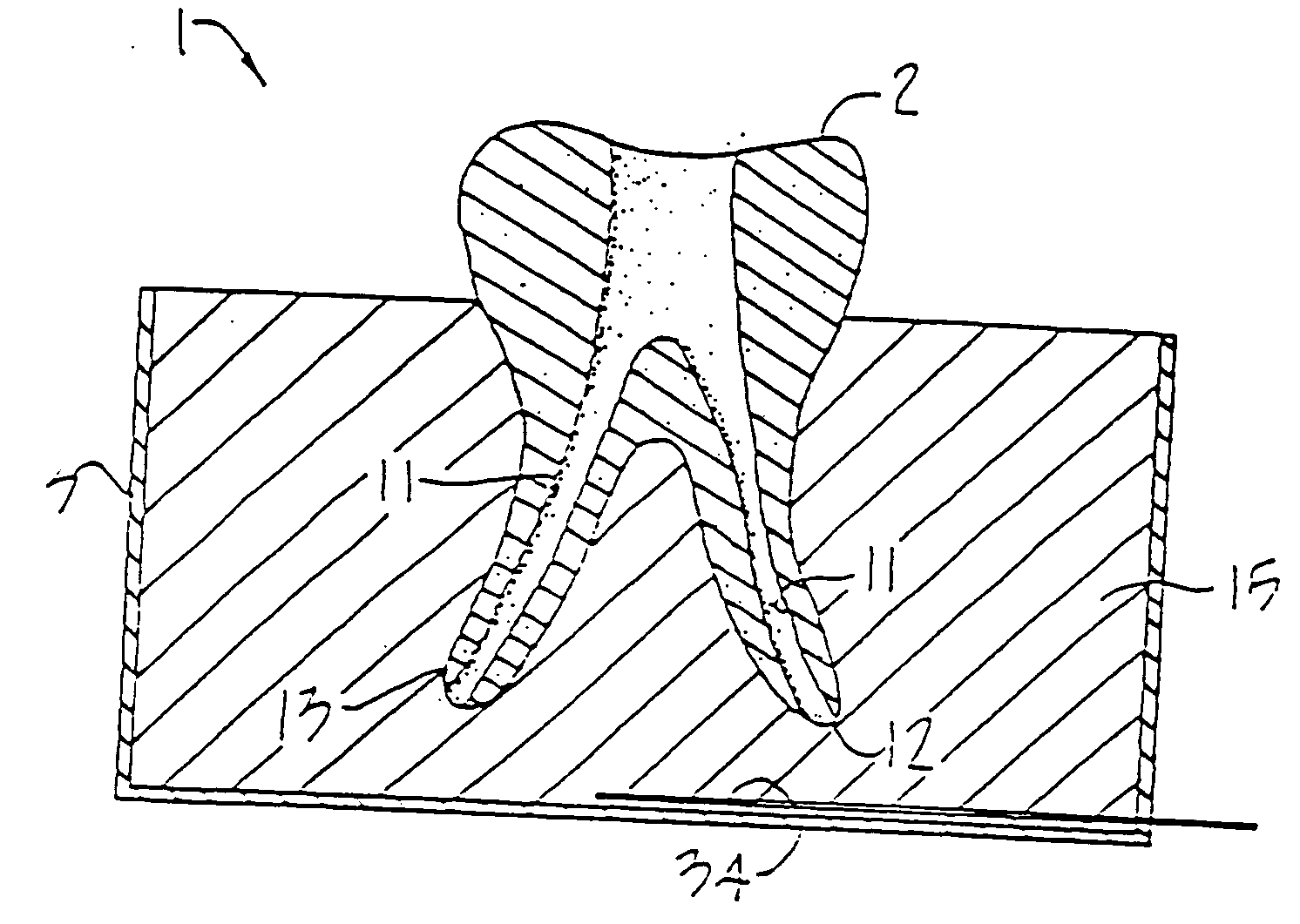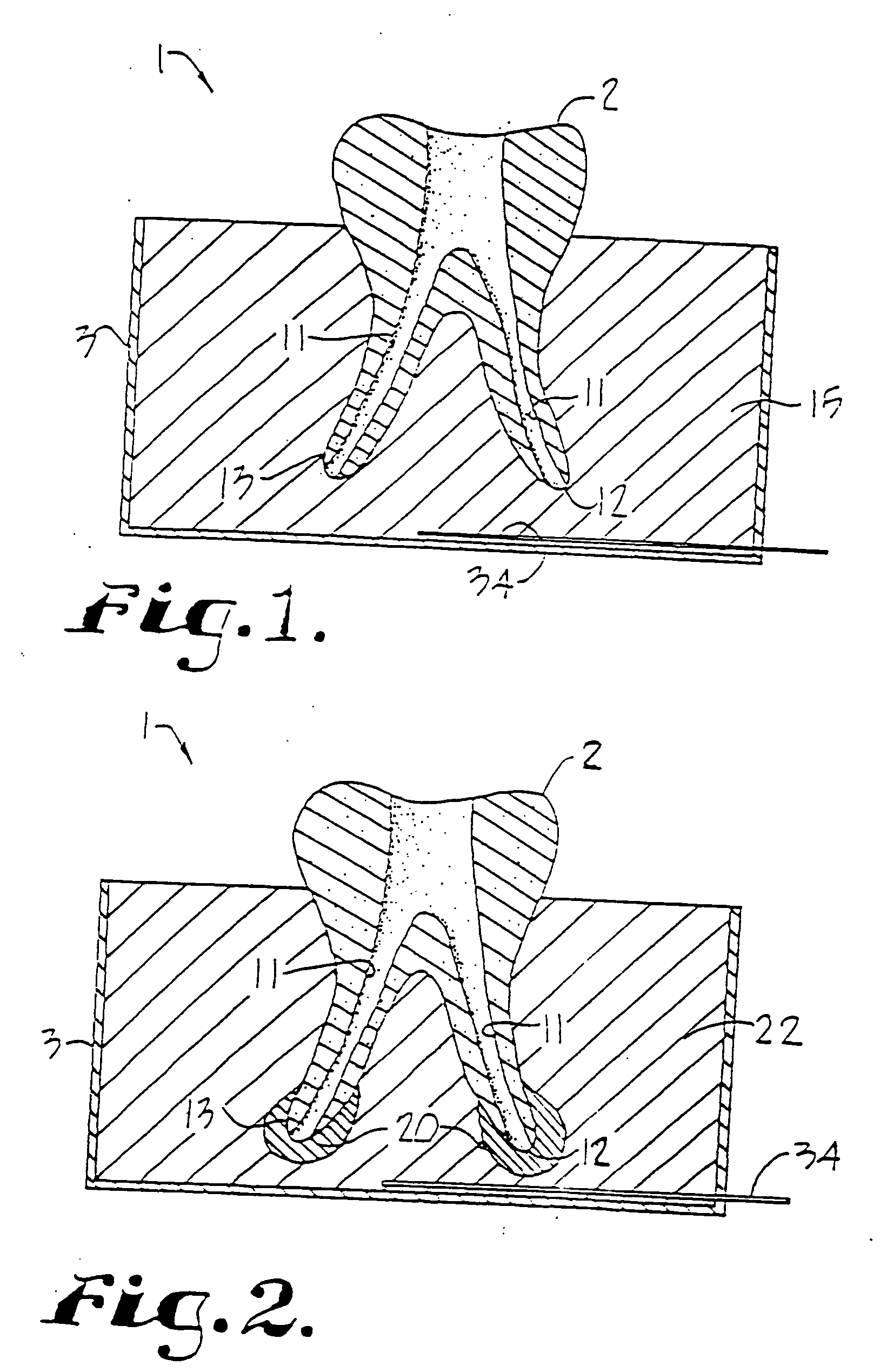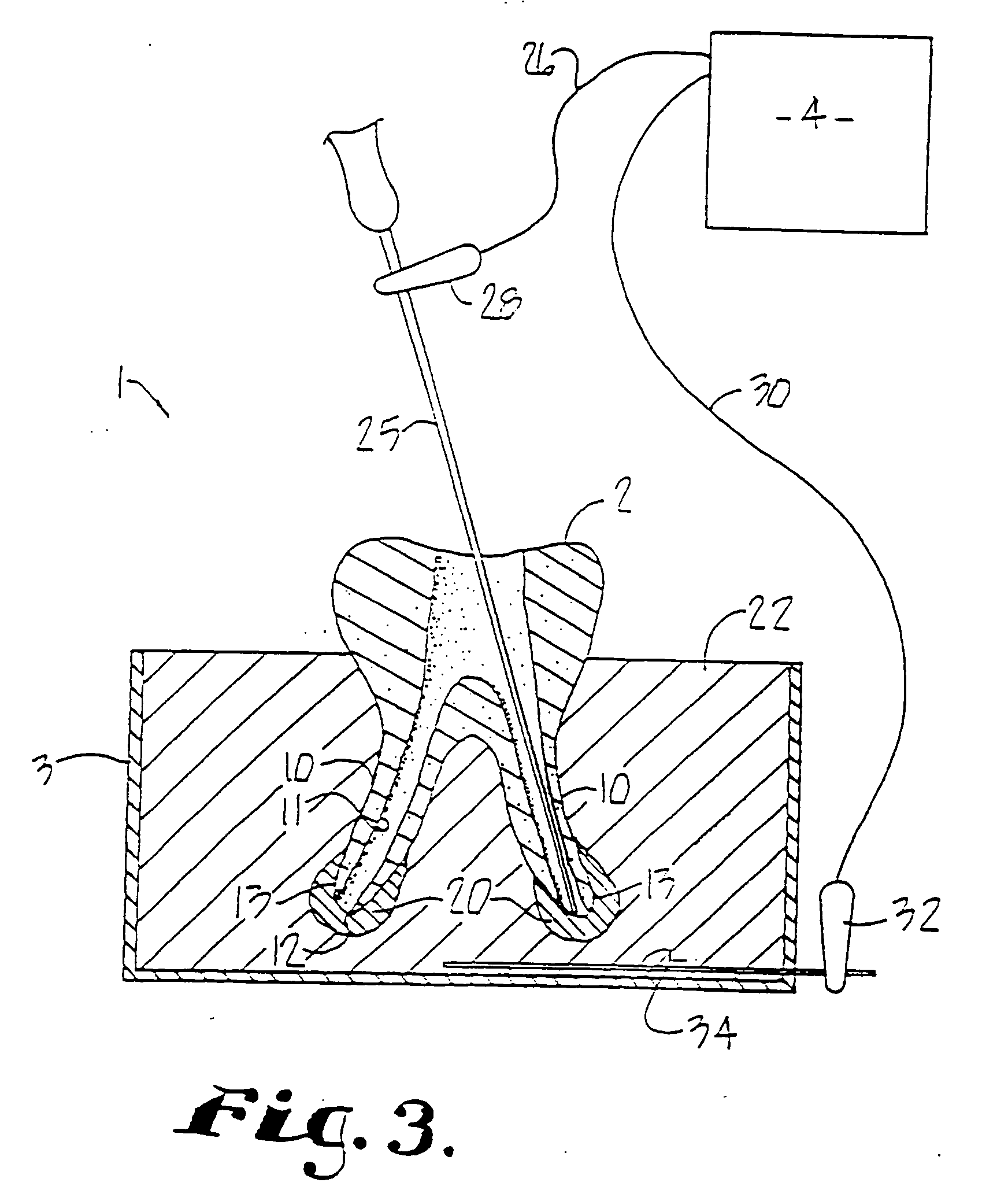Dental training device
a training device and dental technology, applied in the field of dental equipment, can solve the problems of pain and extreme sensitivity of patients, necessitating additional surgery, infection and pain of patients, etc., and achieve the effects of convenient removal and cleaning, low cost, and convenient us
- Summary
- Abstract
- Description
- Claims
- Application Information
AI Technical Summary
Benefits of technology
Problems solved by technology
Method used
Image
Examples
first and second embodiments
[0043] Referring to FIG. 1, the reference numeral 1 generally indicates a training device according to the present invention which is useful to create an effective simulation of a tooth in a patient, so that a student may practice using an electronic apical position locator. The training device 1 consists of a tooth 2 which may be an extracted human tooth or a replica, which is set in a fixture 3 and connected to an apical position locator 4, FIG. 3, as hereinafter described. In more detail, an illustrated exemplary tooth 2 is a pre-molar with two roots 10, each with a root canal 11 ending at an apex 12 near the tip 13 of each root. Other tooth forms are equally suitable. In a live tooth, the root canal 11 is filled with nerve pulp tissue. Also, a live tooth is set into a periodontal ligament which surrounds the root 10 and acts as a barrier between the tooth root and the bone that holds the tooth. In a patient the periodontal ligament or tissue around the tooth is moist and electri...
third embodiment
[0053] Illustrated in FIGS. 4 through 8 is a third embodiment of a dental training device in accordance with the present invention that is generally represented by the reference numeral 100. The training device 100 has certain aspects that are similar to the devices that are illustrated and disclosed in the previous embodiments and reference is made to those embodiments for certain details such as materials of construction.
[0054] The training device 100 generally comprises a manikin 110 having at least one socket 111 and, unlike the previously disclosed embodiments, includes a sleeve 112 operably received in the socket 111 and within which a tooth 113 is mounted in a generally solid matrix 114.
[0055] The manikin 110 is preferably a type of device which is sometimes also referred to as a typodent that is utilized in the training of dental students. The manikin 110 has an upper jaw or maxilla 120 and a lower jaw or mandible 121 that are mounted on a support frame 122, such that the ...
example i
[0075] Highly conductive matrix components were produced in accordance with the invention having the following formulation by weight:
Composition Aethylene vinyl acetate68%carbon powder30%steel fiber2%
[0076]
Composition Bflour45%salt15%water35%oil5%
[0077] The highly conductive matrix component Composition B was applied to roots of these teeth, as is shown in FIG. 5 and a root sleeve of plastic tubing was placed about Composition B, as is shown in FIG. 6. Composition A was then placed about the tooth root in a sleeve, such as sleeve 112, as is shown in FIG. 7, and a procedure was performed using an apex locator as described in the last embodiment to find the distance from the crown to each tooth root apex. Two other procedures were performed on each of the teeth to determine root length which were by x-ray measurement and by in vitro measurement. The results are provided in Table 1.
TABLE ITest Result:Root lengthRoot lengthRoot length byin vitro in mmby x-ray in mmapex locator in mm...
PUM
 Login to View More
Login to View More Abstract
Description
Claims
Application Information
 Login to View More
Login to View More - Generate Ideas
- Intellectual Property
- Life Sciences
- Materials
- Tech Scout
- Unparalleled Data Quality
- Higher Quality Content
- 60% Fewer Hallucinations
Browse by: Latest US Patents, China's latest patents, Technical Efficacy Thesaurus, Application Domain, Technology Topic, Popular Technical Reports.
© 2025 PatSnap. All rights reserved.Legal|Privacy policy|Modern Slavery Act Transparency Statement|Sitemap|About US| Contact US: help@patsnap.com



